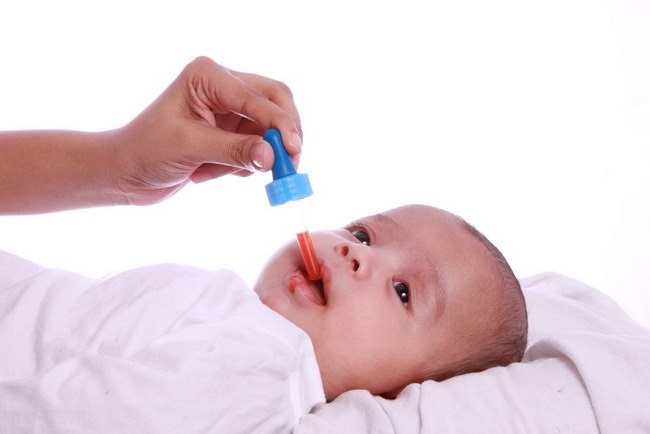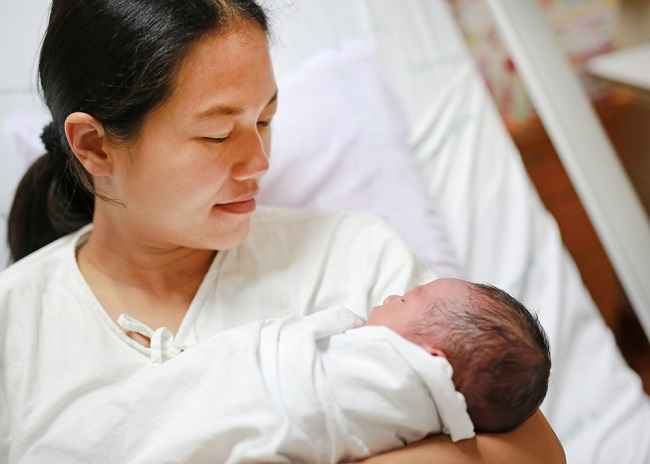Febrile seizures are the most common seizures in children. These seizures are different from epilepsy and are generally harmless. However, because epilepsy also often affects children, parents need to understand the difference between the two diseases.
When a child has a seizure, the limbs will shake violently or jerk vigorously. The child's level of consciousness will decrease and his eyeballs seem to look up. Some children also unknowingly urinate or defecate during a seizure.

Febrile seizures or step disease are seizures that are triggered by fever and are not caused by disorders of the brain. This is different from epilepsy. In epilepsy or seizures, seizures are caused by a disturbance in the electrical currents in the brain and can occur repeatedly even in the absence of fever.
Difference Between Febrile Seizure and Epilepsy in terms of Age
Febrile seizures generally occur when a child is 6 months to 5 years old. Even so, there are some children who experience febrile seizures before the age of 3 months or after the age of 6 years. However, this condition usually becomes less common as the child gets older.
In contrast to febrile seizures, epilepsy can be experienced by anyone regardless of age, ranging from children, adolescents, adults, to the elderly. Children who suffer from epilepsy may continue to experience it into their teens or adults.
Differences between febrile seizures and epilepsy in terms of causes
Febrile seizures and epilepsy are caused by different things. A febrile seizure is not caused by a brain disorder, but is triggered by a body temperature that rises more than 380 Celsius.
This increase in body temperature can be caused by a reaction after immunization, a bacterial infection, or a viral infection, such as the influenza virus or measles. However, the infection that causes fever in cases of febrile seizures is not an infection in an area of the brain like meningitis.
Whereas in epilepsy, there is a disturbance in the brain. Nerve cells in the brain and throughout the body communicate with each other using electrical impulses. When this communication process is disrupted, uncontrolled movements can occur in the form of seizures.
In contrast to febrile seizures which have a clear cause, namely fever, seizures in epilepsy are generally uncertain and can occur at any time.
Differences between febrile seizures and epilepsy in terms of symptoms
Febrile seizures can be divided into simple febrile seizures and complex febrile seizures. In a simple febrile seizure, jerking movements occur throughout the body, but do not last more than 15 minutes and do not recur within 24 hours.
In complex febrile seizures, the jerking movements usually start in one part of the body, last more than 15 minutes, or occur repeatedly over a 24-hour period.
For epilepsy, the symptoms that appear can vary from one patient to another, depending on the part of the brain that is affected. Seizures in epilepsy can be in the form of jerking movements throughout the body or only in some parts of the body. These seizures may or may not be accompanied by loss of consciousness or fainting.
Some people with epilepsy also experience an aura just before the onset of a seizure. Some examples of auras in epilepsy are smelling a strange smell, daydreaming or falling suddenly, feeling scared, excited, numb, tingling, or feeling certain body parts getting bigger or smaller (Alice in Wonderland syndrome).
Differences between febrile seizures and epilepsy in terms of treatment
When a child with a history of febrile seizures has a fever, parents can give him fever-reducing medication. If a seizure appears, there is no special treatment that needs to be done other than protecting the child from injury, because febrile seizures will generally stop on their own in a short time.
However, if the seizure lasts more than 3-5 minutes, parents are advised to give anticonvulsant medication through the rectum and immediately take the child to the nearest hospital or clinic. Apart from fever and seizures, there is no special medicine that needs to be taken every day.
Unlike the case with epilepsy. People with epilepsy need to take antiepileptic drugs regularly every day so that the drug levels in their body remain stable to reduce the frequency of seizures.
If the patient who regularly takes the drug has not had seizures for several years, the doctor may stop giving the drug. However, if seizures persist frequently, your doctor may change your medication or suggest surgery to repair the affected part of the brain.
Differences between febrile seizures and epilepsy in terms of complications
Febrile seizures generally do not have a serious health impact. Simple febrile seizures do not cause brain damage, decreased intelligence, or impaired learning.
However, one study suggests that about 2–10% of children who have had a febrile seizure may develop epilepsy later in life. This generally occurs in children who have a history of developmental disorders, premature birth, recurrent seizures, or abnormal electroencephalography (EEG) results.
Meanwhile, in epilepsy, serious disorders can occur if not treated properly. Epilepsy can increase the risk of children having learning difficulties, disorders mood, and several other psychological disorders.
Febrile seizures are seizures that are triggered by fever and generally do not cause harm, while epilepsy is a more serious condition in which seizures can occur repeatedly even though the child does not have a fever.
If your child has signs of epilepsy, has a febrile seizure that lasts more than 5 minutes, or is having a seizure for the first time, you are advised to take him to the doctor immediately so that he can be examined and given appropriate treatment.
Written by:
dr. Irene Cindy Sunur









